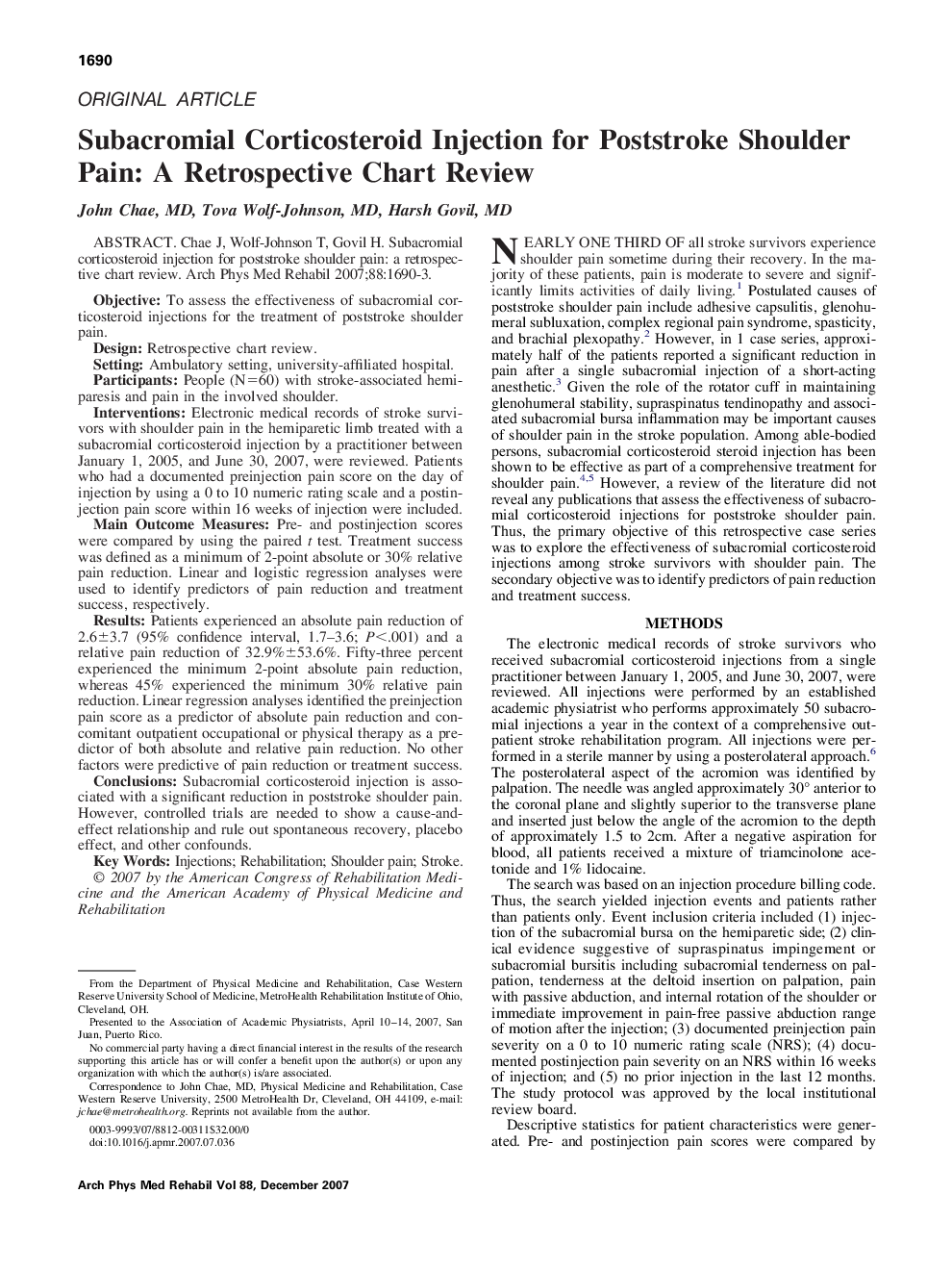| Article ID | Journal | Published Year | Pages | File Type |
|---|---|---|---|---|
| 3450871 | Archives of Physical Medicine and Rehabilitation | 2007 | 4 Pages |
Chae J, Wolf-Johnson T, Govil H. Subacromial corticosteroid injection for poststroke shoulder pain: a retrospective chart review.ObjectiveTo assess the effectiveness of subacromial corticosteroid injections for the treatment of poststroke shoulder pain.DesignRetrospective chart review.SettingAmbulatory setting, university-affiliated hospital.ParticipantsPeople (N=60) with stroke-associated hemiparesis and pain in the involved shoulder.InterventionsElectronic medical records of stroke survivors with shoulder pain in the hemiparetic limb treated with a subacromial corticosteroid injection by a practitioner between January 1, 2005, and June 30, 2007, were reviewed. Patients who had a documented preinjection pain score on the day of injection by using a 0 to 10 numeric rating scale and a postinjection pain score within 16 weeks of injection were included.Main Outcome MeasuresPre- and postinjection scores were compared by using the paired t test. Treatment success was defined as a minimum of 2-point absolute or 30% relative pain reduction. Linear and logistic regression analyses were used to identify predictors of pain reduction and treatment success, respectively.ResultsPatients experienced an absolute pain reduction of 2.6±3.7 (95% confidence interval, 1.7–3.6; P<.001) and a relative pain reduction of 32.9%±53.6%. Fifty-three percent experienced the minimum 2-point absolute pain reduction, whereas 45% experienced the minimum 30% relative pain reduction. Linear regression analyses identified the preinjection pain score as a predictor of absolute pain reduction and concomitant outpatient occupational or physical therapy as a predictor of both absolute and relative pain reduction. No other factors were predictive of pain reduction or treatment success.ConclusionsSubacromial corticosteroid injection is associated with a significant reduction in poststroke shoulder pain. However, controlled trials are needed to show a cause-and-effect relationship and rule out spontaneous recovery, placebo effect, and other confounds.
